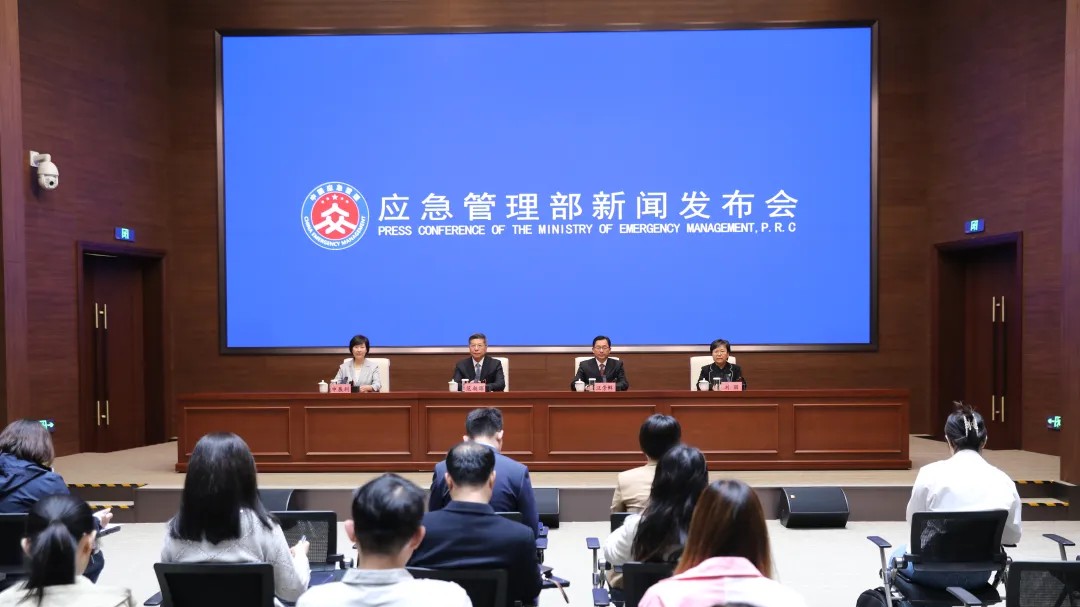The Number of Safety Accidents in Key Counties Involving Hazardous Chemicals Has Seen a Dual Decline
The Ministry of Emergency Management (MEM) held a regular quarterly press conference at 10:00 a.m. on April 16th (Wednesday) to brief on the national production safety and natural disasters in the first quarter, interpret the National Overall Emergency Response Plan for Emergencies, introduce the progress of the key work related to safety production, and answer questions of concern to the media. Shen Zhanli, spokesman of the MEM and director of the News Publicity Department, presided over the conference, which was attended by Fan Zhaohui, director of the Rescue Coordination and Preparedness Management Bureau, Wang Chongxian, director of the Department of Comprehensive Coordination of Work Safety, and Liu Li, deputy director of the Department I of Hazardous Chemical Safety Supervision and Administration , who answered questions from reporters.

Reporter from People’s Daily: Earlier this year, the State Council Safety Commission Office launched the expert guidance service for key counties involving hazardous chemicals in 2025, and I would like to ask the progress of the program. Thank you.
Liu Li, Deputy Director of the Department I of Hazardous Chemical Safety Supervision and Administration of MEM:
First of all, thank you for your attention to the work of safety production of hazardous chemicals.
Since the implementation of the expert guidance service in key counties involving hazardous chemicals in 2019, it has covered 135 key counties. Mainly through ministry-level experts sending to grassroots communities, the expert service focuses on enhancing professional supervision capacity, aiming to smooth the last one kilometer of the implementation of key work and strengthen the weak foundation of safety production of companies, promoting local supervision capacity. Accidents and deaths in key counties have decreased by 43.5% and 52.5% respectively compared with 2019, which demonstrates the expert guidance service in key counties involving hazardous chemicals has become a brand to serve grassroots communities and companies.
Based on the number of local companies, industry features and the accidents this year, we identified 73 key counties of hazardous chemicals, in which we continue to focus on the prevention and control of major safety risks of hazardous chemicals, the implementation of the three-year campaign and the annual key work and improve the capacities of localities and companies to identify and solve the problem. In addition, “Two Priorities, Two Combinations ” service approach was also proposed.
The “Two Priorities” mainly highlights categorized guidance and targeted service. Categorized guidance refers to the varied policies in newly-included key counties and existing ones. Targeted services are designed to match experts from different fields and professions based on the industry features and firm types in key counties, focusing on strengthening the weaknesses and carrying out thematic training through targeted courses.
The “Two Combinations” are the combination of guidance and communication, and guidance and rectification. The combination of guidance and communication, mainly through research beforehand, exchanges during the process and tracking guidance afterward, aims to further strengthen the communication with local emergency management departments and firms. Through targeted guidance, it can promote mutual learning of typical experience and practice. The combination of guidance and rectification, mainly for the feedback of major hidden dangers and problems, refers to practical suggestions and measures to enhance the rectification of firms and form the whole chain of services including inspection, feedback, training, rectification and re-examination.
Since the beginning of this year, we have provided guidance services to 10 key counties involving hazardous chemicals in 10 provinces, during which more than 900 problems and hazards were identified, 20 feedback training courses, attended by nearly 4,000 people online and offline in over 1150 firms, were organized, and over 140 questions from those firms were answered. More than 100 local experts were invited to participate in the guidance services in a “one-to-one pairing” way and over 200 local experts were mobilized as teams in 10 key counties. Moreover, over 2,600 companies and 2,500 local experts in 73 key counties have access to online learning resources, and an offline training course was held. Feedback from local questionnaires shows that the “sense of gain” of local communities in this round of expert guidance services has been further strengthened and the efficiency of work safety supervision has been further improved, enhancing the implementation of key tasks.
In the future, we will continue to improve the quality of guidance service, strengthen the role of expert guidance services in provincial-level key counties, supporting the stable progress of safety production of hazardous chemicals around the country. Thank you!